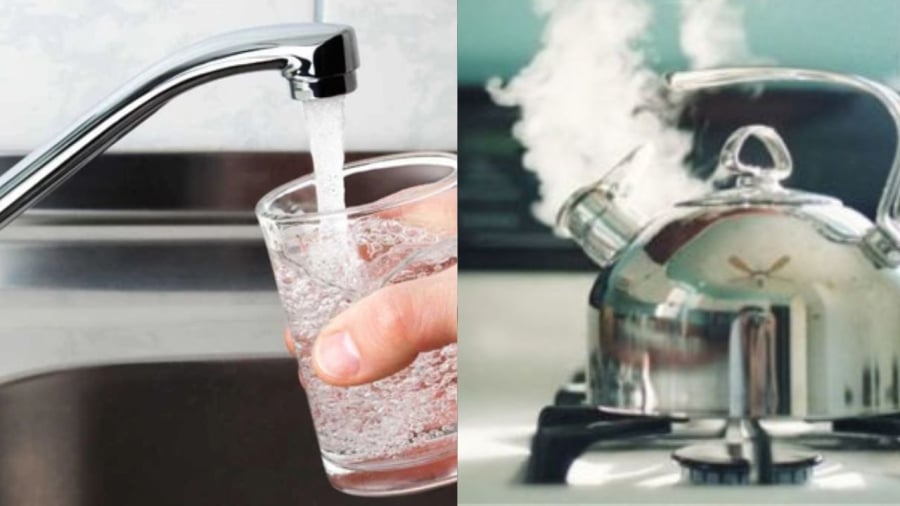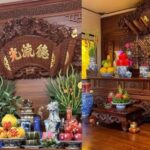In Vietnamese culture, water is an essential offering, second only to incense. Depending on the circumstances, other offerings such as sticky rice, chicken, fruits, candles, and flowers may be omitted, but once the ceremony begins, incense sticks and a bowl of water are considered indispensable.
Today, with more convenient worship practices, it is common to see bottles or cans of water placed on the altar during preparations. However, a traditional water vessel, such as a bowl, cup, or glass, remains a crucial part of the ritual and is always positioned at the front of the altar.
The water in this vessel is typically plain, continuing a long-standing tradition.
Why plain water?
In daily life, drinking plain water is often associated with poverty and economic hardship. This is because untreated water is believed to have a higher risk of bacterial contamination and is, therefore, considered unsafe and unhygienic. However, when it comes to spiritual practices, those who uphold ancient customs still opt for plain water, as long as it is clean.
Traditionally, people would use water collected from rainwater tanks for worship, ensuring its clarity despite the lack of boiling or modern filtration.

Water is an indispensable offering in spiritual practices
In the context of worship, water symbolizes life, wealth, and sustenance. Folk beliefs hold that spirits consume plain water, leading ancestors to consume only what has not been boiled or treated.
Thus, the choice of plain water in spiritual practices is not a sign of disrespect or negligence but a reflection of the belief that ancestors will consume what is offered to them.
In Buddhism, the act of offering incense and water is meant to help Buddhists reflect and purify their souls. Therefore, as long as the water is clean and clear, any source, whether from a tap, boiled, rainwater, or well water, is acceptable for offering to Buddha. However, ensuring the water’s purity and freedom from impurities is essential.

Ancestors are believed to consume plain water
How should water be placed on the altar correctly?
On the ancestor and deity altars, it is common to find a water vessel with three or five cups, depending on the preference of the homeowner. Three cups of water represent the sincerity of the living towards the deities and ancestors. Specifically, the left cup is for the ancestors, the right cup for the deities, and the middle cup for the ancestors’ female and male guardians.
The number three also holds significance in folk beliefs, as seen in customs like mourning one’s parents for three years and honoring three generations. Meanwhile, five cups of water represent the five ancestors, with the two outer cups dedicated to female and male guardians and the three inner cups symbolizing the homeowner’s sincerity towards the deities.
The number five also corresponds to the five elements of “Metal, Wood, Water, Fire, and Earth,” adding symbolic value to the worship practice. This is reflected in the five offerings of “Incense, Lamp, Tea, Flowers, and Fruits.” In Buddhist altars, the number three represents the Three Jewels of Buddhism: the Buddha, the Dharma, and the Sangha.
Therefore, whether you choose to place three or five cups of water on your ancestor altar is not of utmost importance, and you may consider the available space. If your altar is spacious, you may opt for a five-cup vessel, while a smaller altar may accommodate three cups without any violation of customs.
When it comes to Buddhist altars, the number of cups is not as significant, and three cups are typically used to represent the Three Jewels, or a single glass of water may be offered, often in a glass vessel to symbolize purity and vegetarianism.
On the altar of the God of Wealth, water is believed to attract wealth and prosperity. Thus, in addition to the three or five cups, it is customary to include a bowl of water with floating flowers or a glass of plain water.
The water vessel should be placed in front of the incense burner and centered on the altar, avoiding any偏 left or right positioning. Bottles or cans of water are usually placed behind the incense burner, serving more as decorative elements.
This information is for reference only and is based on spiritual beliefs.














